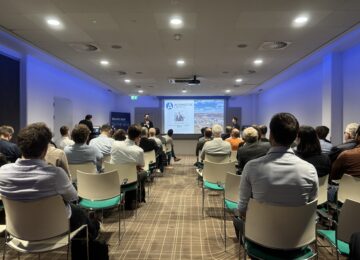Power grid overload: unorthodox measures needed
The outgoing cabinet and grid operators today came out with measures for the growing grid congestion problems in the provinces of Utrecht, Gelderland and Flevoland.
Unorthodox measures in Utrecht province
In large parts of the Netherlands, the electricity grid is currently already so full that large consumers there will not be able to obtain new or heavier connections in the coming years without additional measures. The situation and prospects in the so-called FGU region (province of Flevoland excluding the Noordoostpolder and the provinces of Gelderland and Utrecht) are currently the most worrisome, according to the grid operators involved. For the province of Utrecht, the network operators have completed an in-depth analysis. This now provides a picture of which measures are most effective here. The analysis of the Flevopolder and Gelderland will be completed before the summer.
In Utrecht - without additional measures - overloading and outages are imminent as early as 2026. Grid expansions will not provide a solution in the short term because they will not be completed until 2029. That is why the outgoing cabinet and the network operators have today come up with ten unorthodox measures. These measures include the creation of additional controllable generation through flextenders, the first to consider the option of combined heat and power (CHP). The next option is through functional, technology-neutral procurement to attract new investment by market participants in controllable power. As a final option, even one or two gas generators can be tendered out.
Position of energy storage
The outgoing cabinet and the grid operators have reached this conclusion because the peaks in the high-voltage grid are of long duration (often longer than 8 hours), so they cannot be fully absorbed by batteries. However, the parties are considering whether energy storage can be deployed through adequate agreements on active grid support. TenneT and Liander are investigating the possibilities of grid-supported integration.
The parties also see a role for energy storage in 'grid-aware new buildings'. By adapting existing building designs and encouraging the use of (temporary) collective heat solutions (incl. additional heat buffers) and collective battery solutions, among other things, the Minister of the Interior and Kingdom Relations hopes that new congestion will be prevented in the future.
Energy Storage NL: grid-supported storage is necessary
Energy Storage NL has held several discussions with grid operators and the ministry in recent months to look at the use of storage during grid congestion. Due to longer periods of grid congestion, alternative measures are necessary. However, a system with batteries will reduce the hours of use of CHPs and gas generators, thus reducing CO2 emissions. Energy Storage NL therefore recommends including hybrid solutions in the announced flextenders.
Energy Storage NL fully endorses the fact that energy storage should only be grid-supported. The industry organization therefore proposes to sit down with the grid operators in the near future to develop contracts for this purpose including compensation. The plans of the Minister of the Interior and Kingdom Relations to facilitate grid-conscious new construction by stimulating the use of (temporary) collective heat solutions (including additional heat buffers) and collective battery solutions can also count on the support of the storage sector.
To make this possible, the electricity grid profiles of TenneT and the regional grid operators need to be better aligned. These profiles can be controlled and adjusted by batteries. Our call is therefore for grid operators to proactively look at how batteries can be used to flatten these profiles. In this way, energy hubs (including storage) in the built environment can contribute to reducing grid congestion and batteries can be used more efficiently against grid congestion.
Finally, Energy Storage NL calls for conversion of electricity towards heat and molecule storage to be included in the actions within the National Action Program on Grid Congestion. Outgoing Minister Jetten rightly refers in the parliamentary letter to a pilot in Merwede-Kanaalzone in Utrecht. Where, partly through the deployment of a large underground thermal storage system, the peak capacity for total electricity demand has been reduced by 20- 30%. It would be a shame to miss out on the potential of conversion in reducing (input) congestion, according to Energy Storage NL.





